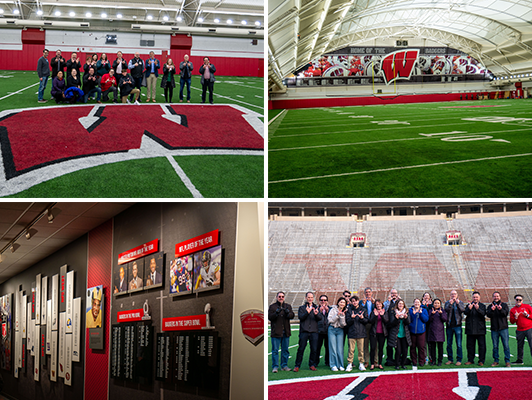Our December 8, 2022, Information Technology peer group meeting discussed the key technology trends that will impact your strategic ambitions in the year ahead. More specifically, the participants heard from highly qualified speakers on technology trends, how to bridge the gap between remote and hybrid work, and the importance of AI and Automation to optimize business operations.
Mark P. McDonald, Executive Advisor and University Lecturer, kicked off our meeting with a presentation about the technology trends for 2023. Mark explained that we are working our way between Web 2 and Web 3, which is shaping the nature of digital transformation.
Web 2.0 is the mobile technology we have that created the social web. The fundamental thing that happened with Web 2.0 is that many agencies lost control over their company’s future, but this problem was glossed over because of the fact that it created a better experience for the customers. In other words, managers are giving up many things in order to make the customers happy. Web 3.0 is the concept of the next generation of the web where most users will be connected through a decentralized network and have access to their own data. Mark also explained that the biggest challenge for IT executives now is that the solutions for many business problems are no longer just about IT. Instead, the answer to most of these problems has moved to be directly applicable to customers and focuses on revenue. Lastly, Mark shared the 4 pathways to digital transformation: industrialize from spaghetti and silos, delight customers first, alternate the focus (like stair steps), and create a new unit.
After Mark’s presentation, we heard from our virtual speaker, Tricia Perkins, Sr. Strategic HR Advisor at Lake Effect HR and Law. Tricia gave a wonderful presentation about bridging the gap between remote and hybrid work. Since the pandemic and the rise of virtual work, many businesses had to focus on different things in terms of their employees: shifting work policies and procedures to meet virtual demands, retention of good employees, and attracting talent. Diversity, Equity, and Inclusion along with mental wellness are also the topic of focus of some organizations.
In March 2022, the World Health Organization released a scientific brief stating that COVID triggered a massive 25% increase in the global prevalence of anxiety and depression. Another survey from McKinsey revealed that 4 in 5 HR leaders report that mental health and well-being is a top priority for their organization. Tricia noted the importance of talking with your employees and gauging their opinion on how important they think these topics are because it may vary from company to company. Tricia talked about how it is essential to be an empathic leader– showing an ability to understand and share the feelings of another. Changes needed for empathic leadership may include changes from boss to mentor/coach, tasks to results, and formal feedback to informal feedback (such as quarterly check-ins, monthly goal reviews, or weekly 1:1 meetings). Another essential part of what Tricia talked about is the importance of acknowledging the challenges of having a hybrid workforce. Businesses should communicate to both virtual and in-office employees at the same time and to the same degree. This is important to ensure that all employees are receiving the same information.
Lastly, we heard from Don Sweeney, Founder and Intelligent Automation Leader at Ashling Partners, about optimizing business operations with artificial intelligence and automation. He shared that at Ashling Partners, when they talked to their customers about the main challenges they’re looking to address using intelligent automation, there were 3 main concepts: labor capacity/shortage, driving out inefficiency, and high value– putting their employees in a position to be doing more meaningful work. In our current world, automation, robots, and AI are taking over workers’ traditional tasks. More specifically, 47% of American employment is at risk because of the expected impacts of computerization in the foreseeable future. However, automation is much more than just a technology; it is a capability to complete work. Automation is being applied to reduce redundant, manual, and time-consuming work to enable employees to focus on value-added activities. Don explained that economic uncertainty creates a big need for automation. The #1 priority for companies facing economic headwinds is the topic of automation. However, even though 50% of jobs can be automated, only 14% of work has been successfully automated, and 1 in 3 organizations fail to achieve their automation savings target. Successful automation programs driving the largest ROIs have centered around at least one of these experiences: customer experience, employee experience, or supplier experience.
After the event, attendees had a unique opportunity to go on the Badger Tour! Those who joined us traveled to Camp Randall and got a behind-the-scenes look at the Forward Center Football Weight Room and even got to step out onto the turf that our Wisconsin Badgers call home!

Published January 4, 2023
Dylan Kopf and Jenny Zhang, Marketing Student Assistants